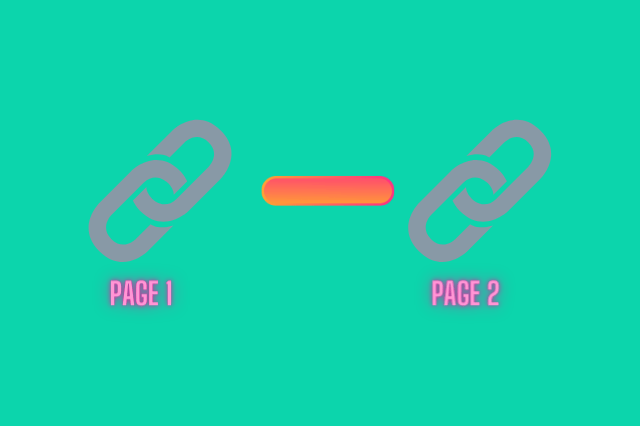Why Is Internal Linking So Important For SEO? Can You Overdo It?
Google is a rather fussy beast when it comes to how they rank websites and rightly so; after all, their job is to provide their users with the most relevant information, delivered with as positive a user experience as possible. As such, they have an awful lot of criteria for us marketers to abide by if we wish to get a look in on the SERPs.
One such criterion: internal linking. But why is internal linking so important for SEO? And is there such a thing as overdoing it?
What is internal linking?
Internal linking, as the name suggests, quite simply refers to any links within your website that connect one page with another.
The most common internal link that you are likely already familiar with is “Contact us for more information” or something to that effect, where you link from your homepage to your contact page, thus allowing your users to submit an enquiry or give your sales team a call as easily as possible.
But, quality internal linking goes far beyond that.
Why is internal linking so important for SEO?
Internal linking is crucial in SEO because it helps Google identify your most valuable content. For example, a long-form blog post that links to a variety of other blogs and service/product pages within your website will likely be quite valuable. This is because, when done correctly, it demonstrates relevancy. But that’s not all:
Internal linking establishes relationships between content
If you have dozens of blog posts on your website and none of them are connected with internal links, then you are doing it wrong! The fact is, when Google is crawling and indexing your website, by following internal links it can better establish the relationship between the various pages and the content present on it.
For example, if this post, in particular, was on a digital marketing agency’s website, they could link internally to other relevant content like:
- The three main types of links: Internal, External, Backlinks.
- Google’s main ranking criteria.
- How to write the perfect CTA on your Contact Us page?
- How to make your website easier for Google to crawl and index appropriately?
The list goes on. And as you can see, by linking internally to each of the above blogs – or any other blogs as necessary – the user experience improves. You naturally guide your website users on a journey, often taking them to content they never knew they needed, ultimately drawing them toward a positive conclusion: spending their money with you.
But, it’s not just about blogging. Internal linking is valuable for service, product, and service area pages as well.
Using the same digital marketing agency example: an SEO agency can service a multitude of regions (e.g., SEO Singapore), and by creating and internally linking multiple service area pages together with unique content on each region, they can add further value to their website and improve their relevance for a variety of localised SEO keywords.
Internal links help Google to identify your content
As websites continue to grow in size and complexity, it becomes more resource-intensive for Google to successfully crawl and index all of the content and pages within.
By linking internally, you essentially help Google to speed this process up.
For example, ‘orphaned content’ (pages that do not have any internal links pointing to them) can easily fall between the cracks and go unnoticed.
Internal links add value by creating pathways for Google’s bots to crawl and thus increasing your chances at content ranking appropriately.
Related:
- The Best Link-Building Trends to Look Up For
- 10 Features That Are A Must For Any E-Commerce Site’s Link-Building Strategy
- Top 10 Critical SEO Errors of E-Commerce Websites
Link value can be shared
Think of all of the pages on your website like trees in a forest that share an underground root system where nutrients and resources are divided out accordingly.
When you publish a new page on your website, if you go back to the relevant pages and create new internal links to connect them, your new content will grow in value significantly. This is because the link value from the other established pages invariably ‘bleeds’ into the linked pages.
Final thoughts: Invest in an internal linking strategy
As you can see, proper internal linking is good practice in SEO. However, let the needs of Google and other search engines be an afterthought. If you get too wrapped up with internal linking for the sake of pleasing the search engine gods, you will invariably overdo it.
Instead, when developing an internal linking strategy, think about the user experience first. Consider: “Does this internal link bring any value to my prospective customers?” If not, then it likely doesn’t need to be made.
Link with intention – the results will follow.





